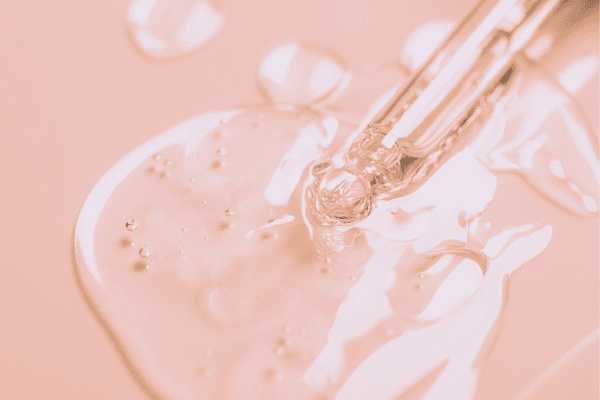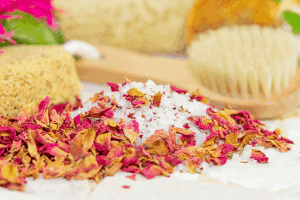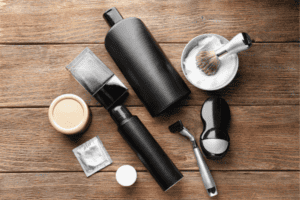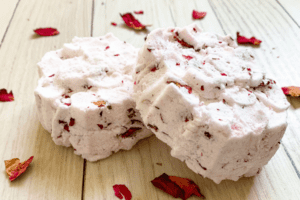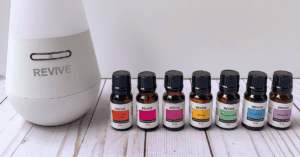Salicylic Acid and Hyaluronic Acid: Should You Use Both?
Hyaluronic acid and salicylic acid have two different purposes and lots of different benefits, so you can technically use both in your clean beauty routine. But I’d think twice before doing it!
Salicylic acid and hyaluronic acid are two of the most popular “acids” used in the beauty industry. You can often find them in cleansers, toners, serums, and moisturizers.
But what are they? And what are the benefits of using hyaluronic and salicylic acid?
If you want to know if you can use both, salicylic acid and hyaluronic acid, the answer is – technically – yes. But I’d be wary before making the decision to do so.
Let me explain.
This post contains affiliate links. You can learn more here.
Pin this image for later!
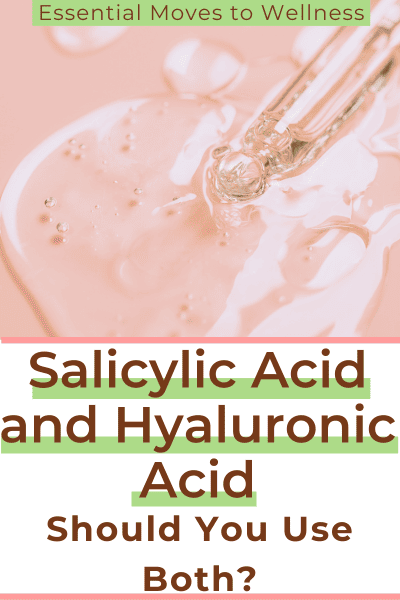
What is Salicylic Acid?
Salicylic acid is a chemical “exfoliant” derived from the bark of a willow tree and wintergreen leaves.
It is a very popular beta-hydroxy acid, or BHA, that works by breaking down the bond that holds dead skin cells together on the surface of the skin. These dead skin cells can then be shed.
Salicylic acid is also oil soluble, which makes it great for cleansing oily skin. It penetrates deep into the pores and unclogs them. Because of this, it is one of the ingredients most often used in over-the-counter and prescription medications for treating acne.
Back before I started my clean beauty journey, salicylic acid was a major part of my skin care routine! I would use a face wash every night that had some concentration of this stuff in it.
And let me tell you, it was not pleasant.
My face would always be burning and/or beat red when I finished my skin care routine for the night. And my skin felt sooo tight and dry. But I was told by a dermatologist that this was normal.
Yes, a dermatologist told me to use a face wash with salicylic acid in it! I’m sure lots of them still do.
After I started becoming more conscious about my daily beauty products, I did some research on salicylic acid, and it’s not pretty!
Applying salicylic acid to your skin isn’t ‘gently exfoliating’ your skin in the least!
It is actually injuring your epidermis!
Salicylic acid forces your skin to shed dead or damaged skin cells in order to grow new, healthier cells. This entire process is called “peeling”.
While this might be necessary for certain skin types and certain situations, it should not be recommended for everyone like it is today!
My opinion on salicylic acid is that your skin is likely better off without it. Especially for those who have sensitive skin.
And, let’s be honest, most everybody has sensitive skin these days due to the toxic ingredients in their beauty products.
But why do so many people use this stuff, if it is so bad?
Let’s dive into that.
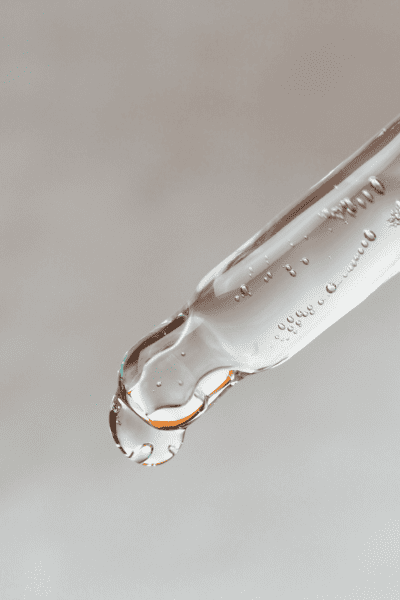
The Benefits of Using Salicylic Acid
There are definitely some benefits to using salicylic acid. Like I said, it’s used in plenty of medications.
If your skin is tough enough to handle it, here are the benefits of using salicylic acid:
- Fights acne. Because it is oil soluble, salicylic acid penetrates deep into your pores. It not only unclogs your pores, but it can also regulate oil production. This prevents new breakouts.
- Minimizes pores. Because it keeps your pores unclogged and clean, it makes your pores appear smaller. This is actually why salicylic acid was recommended to me by a dermatologist way back in the day.
- Antibacterial. It has an acidic pH, which prevents germs and bacteria from growing.
- Reduces inflammation. BHAs actually have the same compound found in aspirin, which makes them anti-inflammatory. This is supposed to reduce irritation and calm the skin. The way it plows through dead skin kind of cancels this out though.
- Fights wrinkles. Salicylic acid increases your collagen production, which helps your skin fight fine lines and wrinkles.
- Lightens skin. Salicylic acid helps break down the keratin in your skin. This lightens dark and uneven spots on your skin.
But Dr. Jaggi Rao advises caution for those with dark skin. He says darker-skinned people produce more melanin, which works to limit inflammation. But since salicylic acid inflames the skin, darker-skinned people may produce more of it, which could actually lead to creating dark spots.
- Smoothes skin. Since it removes the top layer of your skin, it exposes healthy, new skin tissue, which should improve the texture of rough skin.
These are all great benefits of using salicylic acid. But do these benefits outweigh the risks?
Only you can decide. I personally stay clear of the stuff, and find more natural ways to care for my skin.
If you are looking for gentle exfoliation, without chemicals, my homemade DIY sugar scrubs are a great place to start!
Or, if you’re still looking for a product that will even out your skin tone without damaging it in the first place, I highly recommend you check out retinol! I have a post on the best non-toxic retinols that will do wonders for your skin.
What is Hyaluronic Acid?
Alrighty then, on to the next part of your question – what, exactly, is hyaluronic acid?
Well, it’s not actually an acid, that’s what!
Hyaluronic acid is a gooey, slippery substance that our bodies produce naturally. It’s a sugar molecule that is found in our joints, skin, and eyes. It can draw in 1,000 times its weight in water!
Hyaluronic acid is perfect for keeping skin hydrated and moisturized. You can find hyaluronic acid in hydrating toners, serums, and moisturizers.
And if you’re the kind of person who has dry skin, but hates the feeling of lotion on their face, this is your solution!
It feels like a watery gel and absorbs into your skin very fast. There’s no lotion-y feeling whatsoever!
My mom had to stop putting moisturizer on her face due to hot flashes (thanks menopause!) but she still needed something on her skin. Hyaluronic acid is her new favorite thing!! She can now apply hyaluronic acid in a regular amount and it doesn’t melt off of her face.
The Benefits of Using Hyaluronic Acid
I wish I had added hyaluronic acid to my skin care routine when I first started! It makes my skin feel like I just did an expensive facial. It feels moisturized and youthful, and it’s always in that happy medium where my skin feels satiated without slathering a bunch of oils on there.
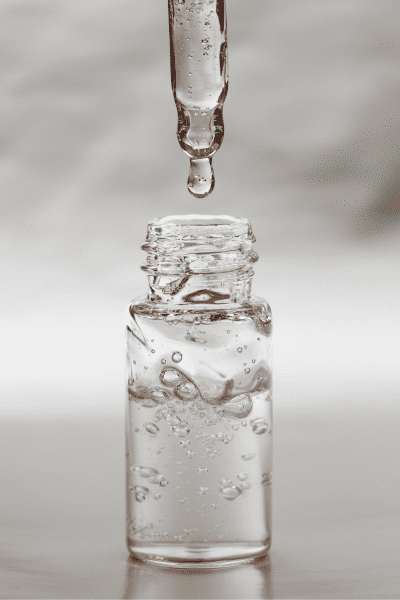
Here are some more awesome benefits of using hyaluronic acid:
- Skin hydration. Hyaluronic acid increases the health of your skin barrier, by making sure you retain water and moisture.
- Reduces wrinkles. Hyaluronic acid quickly plumps up the skin because it holds so much water. This reduces wrinkles and smooths out those fine lines.
- Prevents scarring. Hyaluronic acid helps your skin heal itself, by reducing inflammation and bacteria growth.
- Increases skin elasticity. Because your skin is so hydrated, it has more elasticity and bounce to it. But hyaluronic acid also promotes collagen production. This helps improve skin texture and reduces sagging skin.
The best part is hyaluronic acid is hypoallergenic – it is gentle and can be used by all skin types!
Can I Use Hyaluronic Acid with Salicylic Acid?
If you choose to use salicylic acid, you should definitely use hyaluronic acid with it.
Salicylic acid and hyaluronic acid do completely different things. Hyaluronic acid hydrates and moisturizes, while salicylic acid fights acne and removes dead skin cells.
In fact, you often can find both salicylic acid and hyaluronic acid in one product, such as a serum or a cleanser.
Be careful though. Hyaluronic acid is suitable for all skin types, whereas salicylic acid might be too dry or irritating for some skin types.
You can use both of them together in your skin care routine, but they really cancel each other out. And you ultimately might not see many benefits because of this.
The Benefits of Using Both Hyaluronic Acid and Salicylic Acid
If you are going to use salicylic acid, I’d follow it up with hyaluronic acid. Hyaluronic acid is incredibly moisturizing, which is great, because salicylic acid is incredibly drying!
Together they are better for your skin.
Start with the salicylic acid, to cleanse your pores, fight off acne, and get that deep clean. Then follow up with the hyaluronic acid to replenish the moisture and hydrate your skin.
If your skin can handle the salicylic acid, you could see more youthful, healthy skin.
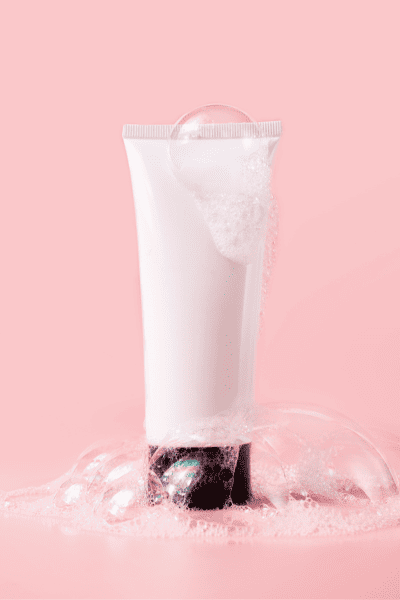
Frequently Asked Questions
Still uncertain whether you should combine salicylic acid and hyaluronic acid? Hopefully some of these most common questions will help you decide!
And as always, if you have more questions, just post them in the comments below. I’m happy to help!
Should Salicylic Acid Go Before or After Hyaluronic Acid?
Ideally, you should apply salicylic acid before the hyaluronic acid because it will cleanse your pores, while hyaluronic acid will hydrate your face.
Plus, salicylic acid is drying. You don’t want it soaking up all the moisture from the hyaluronic acid.
But it really depends on the type of product you are using.
If your salicylic acid product is a serum, and your hyaluronic acid product is a facial cleanser, you’ll have to switch that up! You’ll have to wash with the facial cleanser, and then apply the serum. You’ll want to make sure you use a great moisturizer though, since the salicylic acid can dry out your face.
What Not to Use Salicylic Acid With?
Because salicylic acid is so harsh, there are a few things you may not want to mix it with.
- Retinol. Both are potent acne fighters, so if you use them together, you could really dry your skin out. Check out my post on clean retinol for a gentler alternative!
- Benzoyl peroxide. Another acne fighting ingredient; if you combine it with salicylic acid, it could give you dry, red, peeling skin. I also used this in a cleanser as a teen and it physically hurt me every time. *face palm*
- Alpha-hydroxy acids (AHAs). These are another type of exfoliating acids. If you use both, it can irritate your skin.
- Vitamin C. Vitamin C is a potent antioxidant, that can irritate skin when combined with salicylic acid. I have a post all about how to properly use vitamin C in your routine! It might be a game-changer for you.
- Niacinamide. It helps lighten the skin, like salicylic acid. But the two together can be too harsh.
Read your labels carefully when purchasing your skin care products. And if you’re not sure, try to nail down a routine with a holistic dermatologist!
Do You Use Hyaluronic Acid Before or After Salicylic Acid?
Ideally, afterwards. Because it is super hydrating, and salicylic is super drying.
Hyaluronic acid is best on damp skin, to lock in that moisture. Salicylic acid is best on dry skin. So, starting with the salicylic acid just makes sense.
But it depends on the products you are using. Let’s run through a few scenarios:
- If you’re using a salicylic acid serum and a hyaluronic acid serum: follow the thinnest to thickest rule, applying the thinner product first.
- If you’re using a salicylic acid toner and a hyaluronic acid serum: apply the salicylic acid toner first, then follow with the hyaluronic acid serum.
- If you’re using a hyaluronic acid facial cleanser and a salicylic acid serum: wash with the facial cleanser first and then apply the serum.
And always remember to use the thinnest product first!! This will make your skin feel its best and the application will be flawless.
Can I Use Hyaluronic Acid in the Morning and Salicylic Acid at Night?
If you decide to use salicylic acid, don’t use it too often. It really does damage your skin barrier.
And there’s some research that suggests that acne is associated with skin barrier damage.
It’s best to start slowly with salicylic acid, and work your way up to 2 or 3 times a week. It should NOT be a part of your daily routine!
You can use hyaluronic acid twice a day, easily! It’s super gentle.
My Product Recommendations
I personally don’t recommend salicylic acid.
But if you are interested in trying hyaluronic acid, my all-time favorite is this Osea Hyaluronic Sea Serum! It’s seriously one of my all-time favorite skin care products.
You can read all about it in my totally honest Osea Malibu review.
It’s quite spendy though. So, if you are looking for a more economical option, try this Pai Skincare Hyaluronic Acid.
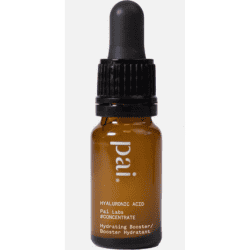
Before You Go!
If you like the benefits of salicylic acid, but think it’s probably too harsh for your skin, then check out my top recommendations for a clean retinol product!
Retinol provides a lot of the same benefits as salicylic acid, and then some! Plus, there are some more gentle retinol options, which aren’t as harsh as salicylic acid.
It’s worth considering!
Related to Salicylic Acid and Hyaluronic Acid
Honest Osea Malibu Review—7 Skin Care Products You Need to Try!
10 Skin Care Tips for Athletes Pre and Post-Workout
Top 10 Natural Sunscreen Products with Mineral Protection
How to Shave With No Harsh Chemicals from Start to Finish and Avoid Irritation
7 Of the Best Affordable Natural Skin Care Products Actually Worth Trying

